Don’t you get tired of seeing mobile learning as a trend year, after year, after year?
It’s been hot for a couple of years already and, I am sure, it will continue to be so for the foreseeable future. There are just too many reasons for that.
But before talking about why mobile learning is important, let’s first recap on the definition.
Out of all the definitions, this one sounds true to us.
"Mobile learning or mLearning is "learning across multiple contexts, through social and content interactions, using personal electronic devices". A form of distance education, mLearners use mobile device educational technology at their convenient time." Wikipedia
We’d like to add just a few clarifications.
Firstly, even though many people view mobile learning as a form of distance learning (self-paced learning), it is not limited only to this. In fact, we’ve seen many examples of mobile learning when it is also applied in traditional classrooms to a great advantage.
Secondly, mobile learning is more than just a responsive LMS. It should be adapted to the specific learner needs and contexts of when it is used.
Experience of working on over 40 eLearning projects (including mobile learning apps) has given us an understanding of problems that can be solved with mobile learning.
From our experience, here are the reasons why companies need mobile learning:
- To provide just-in-time (JIT), on-location training
- To reinforce formal training
- To improve engagement in-classroom training.
In this article, we’ll show you our examples of mLearning apps (developed by Greenice) that cater to each of these needs.
All the solutions in this article were developed for pharmaceutical sales reps, but I am sure that many businesses have similar challenges. So you’ll be able to see why mobile learning can help your business too.
Just-in-Time, On-Location Training
Pharmaceutical sales representatives, like many front-end workers, spend most of their time in the field. Pharma reps, in particular, spend a lot of their working hours in the car and in waiting rooms of hospitals and private practices. All this with an aim to have as many quality face-to-face meetings with doctors as possible.
During these meetings, doctors are never generous with their time (understandably). Statistics show that physicians tend to spend less and less time with sales reps (on average 3 to 6 minutes). So reps have to find ways to convey their messages in such limited time spans.
Moreover, doctors expect reps to be more and more knowledgeable in the medical field. So sales reps are expected to not only be experts in the drugs they represent but also in the medical conditions those drugs are targeted at. The reps also need to be aware of the latest medical researches surrounding these conditions.
So let’s sum up the key challenges of pharmaceutical sales representatives:
- Highly depend on training
- Too little behind-the-desk time to learn in a linear fashion
- Don’t always have a good internet connection
- Need a lot of preparation for each meeting with a doctor.
So, together with our partner training agency, we’ve worked on a mobile learning solution to assist reps in overcoming these challenges.
Here are 6 stunning examples of mLearning for your company.
Example #1: iLibrary
iLibrary iPad app is an interactive collection of resources on medical conditions. The resources are very easy to access (online and offline) and navigate. Sales reps use them to learn at their own pace and track their progress with tests. And, thanks to bookmarks and the interactive glossary, they also use the app for quick memory refreshes and references.
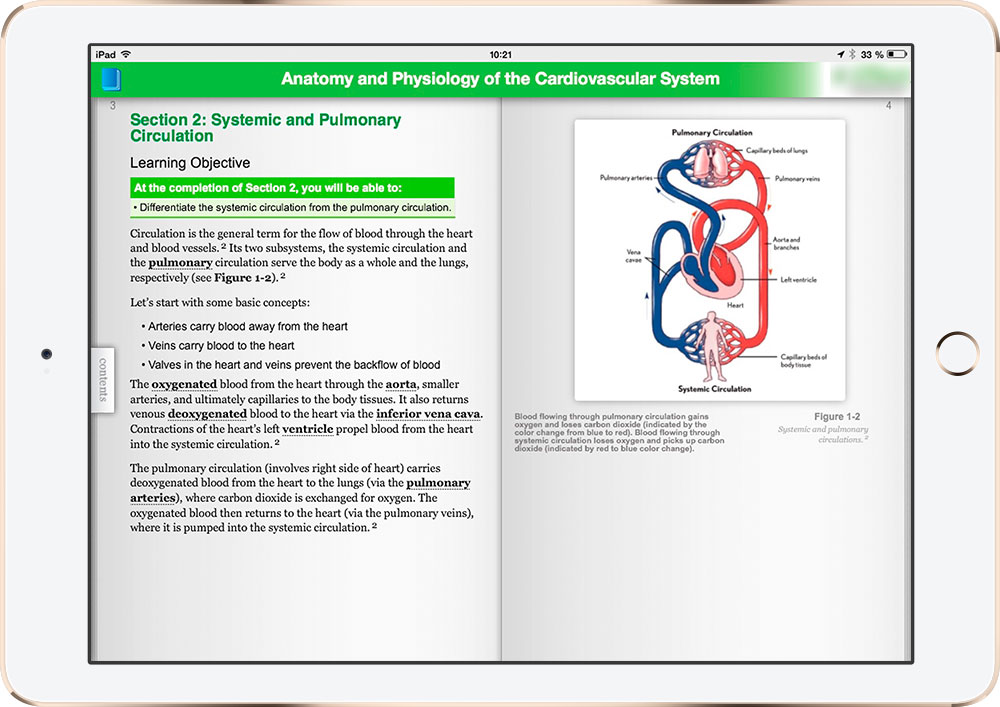
Main features:
- Online and offline work modes
- Interactive questions to check material comprehension
- Page flip effect
- Bookmarking
- Glossary
- Option to look up glossary definitions while staying on the page
- Ability to manage learning modules
- Word search across all chapters of the opened book.
Reinforcement of Formal Training
Studies have shown that learners tend to forget up to 90% of what they’ve learned days after an educational event. This phenomenon is known as a Forgetting Curve, coined by Hermann Ebbinghaus in 1885.
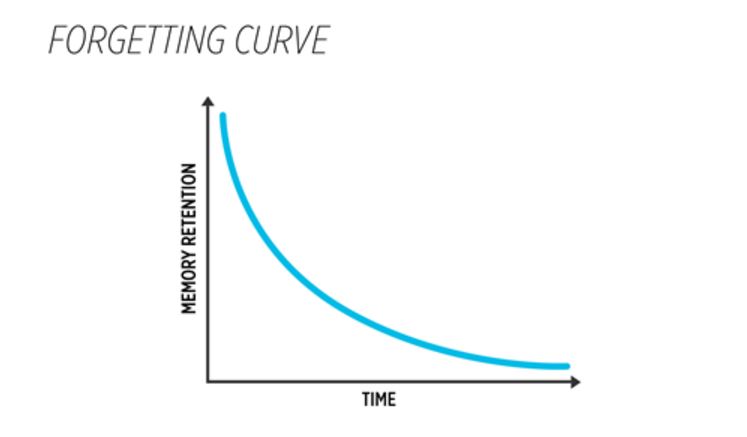
This means that any training program can turn into a waste of everyone’s time and resources. The only way to avoid this is through reinforcement. That is when you test knowledge retention and refresh the memory of learners in regular time intervals after the formal training.
Assess, refresh, repeat. That sounds easy, but we all know it is not. None of us is paid for learning, neither do pharmaceutical sales reps. They get paid for meeting and exceeding the sales quota. Sure, training is necessary for that, but as you’ve seen, sales reps have very limited time and opportunities to do it.
So we had to get very creative to develop reinforcement solutions that would best fit into the busy daily schedules of the employees.
Key challenges:
- Too busy
- Cannot devote big chunks of time to learning
- Low motivation
- Limited behind-the-desk time.
As a result, a good reinforcement solution should be:
- Easily accessible
- Adopted to the context of when and how it will be used
- Engaging
- Built with micro-learning principles in mind (dividing material into small bite-sized pieces).
Example #2: Extending LMS to Mobile
At the time we had already participated in the development of an LMS solution and were asked to optimize it for mobile usage.
However, in partnership with the training agency, we did more than just a responsive design. Our partners have developed special types of content for learning on-the-go and we helped by bringing it to life through a mobile learning solution.
For example, they’ve created training podcasts - interviews with subject matter experts. This turned out to be a very good format for studying in the car. Reps listen to podcasts while driving to sales meetings.
We’ve also added blog posts, compliance navigators, sales materials, and much more mobile-friendly content that supports the core training activities.
Have an idea for a custom mLearning app? We can help!
Contact UsExample #3: Serious Games for Reinforcement
In our experience, serious games (also called educational games) is the most widely used reinforcement tool. We’ve developed over 20 serious games for sales training.
These games usually share the following traits:
- Come in a form of quests or legends with questions surrounding a training topic
- Have a popular entertainment theme: TV shows, blockbuster movies, or game
- Have gamification elements: scores, difficulty levels, and leaderboards.
Learning professionals use this tool to assess the knowledge of employees.
And because of their entertaining, dynamic, and competitive nature trainees love it way more, than boring tests.
Companies use this tool both as a stand-alone app for self-paced training and as a part of an LMS.
Here is an example of one of the educational games we’ve developed. A set of casino games aimed at testing the product knowledge among sales representatives.
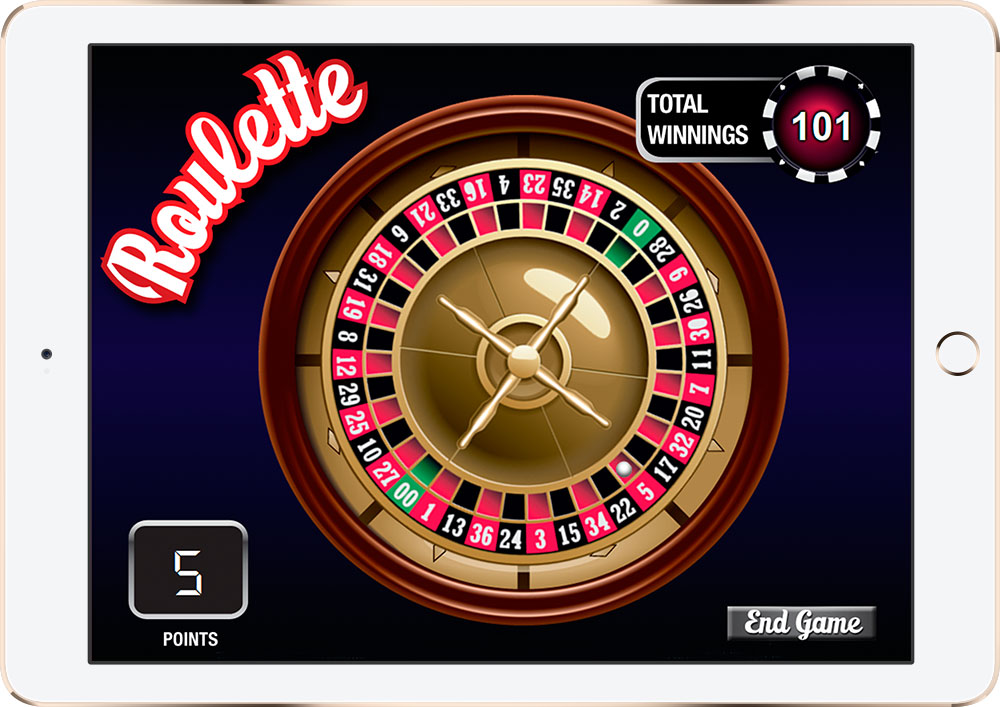
Main features:
- Features of popular casino games: spinning Roulette and Slots, BlackJack dealing
- Multiple-choice, fill in the blank, mix and match and select all that applies questions
- Advanced scoring system and leaderboards
- Tracking and reporting
- Online and offline work modes.
The game became so successful that it was later adapted for usage within the existing LMS and as part of onboarding training.
Want to build a custom educational game?
Contact UsEngaging Trainees in Live Training

It is very common that learners to suffer from information overload and general fatigue during live training events (seminars, conferences, sales meetings, etc.). This happens for many reasons.
These events don’t get organized very often, due to their costly nature. And because of that, they get crammed with activities and information. No wonder people feel overwhelmed.
Key challenges:
- Information overload
- Low engagement.
So organizers have to find ways to spark interest and encourage the participation of trainees. And, technology, among others can help breathe life into such events.
We’ve taken part in the development of many mobile solutions for live events. Our aim was to bring interactivity and engagement into the classrooms. Here are just a few examples that may give you ideas about using mobile learning in your organization…
Example #4: Serious Games for Training Events
I know, it’s the second time I mention serious games, but they work so well for live events too.
In this case, their application is a bit different from self-paced learning. Here are the underlying differences:
- Participants split into teams to compete with each other
- Everyone plays in real-time with their tablets
- The game is led by an instructor
- The instructor manages the game via his/her laptop and general screens.
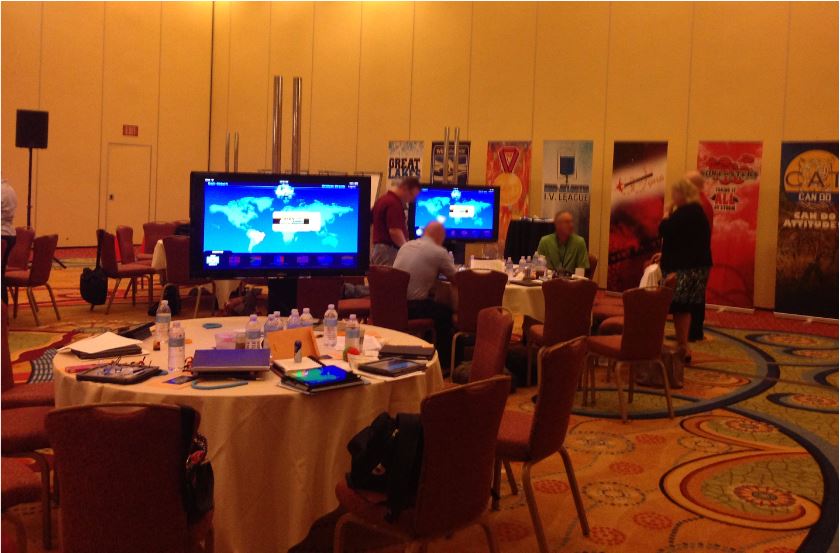
Our clients have been using this tool for many years already, mostly because trainees love it. We’ve seen people refusing to have a coffee break so that they could play some more!
Example #5: ARS App
Among mobile learning examples, ARS apps are definitely worth to be highlighted.
Audience Response System (ARS) app is quite a simple tool that can dramatically improve engagement during large scale events.
If you get a hundred and more people in one room, it is going to be very hard to get everyone to participate. ARS app is a great solution to this problem.
It is used for polling participants and getting real-time results during a live event.
A speaker can ask everyone a question and participants can answer it with their tablets right away. The speaker will see and be able to show the general statistics of answers on a general screen seconds after everyone replies.
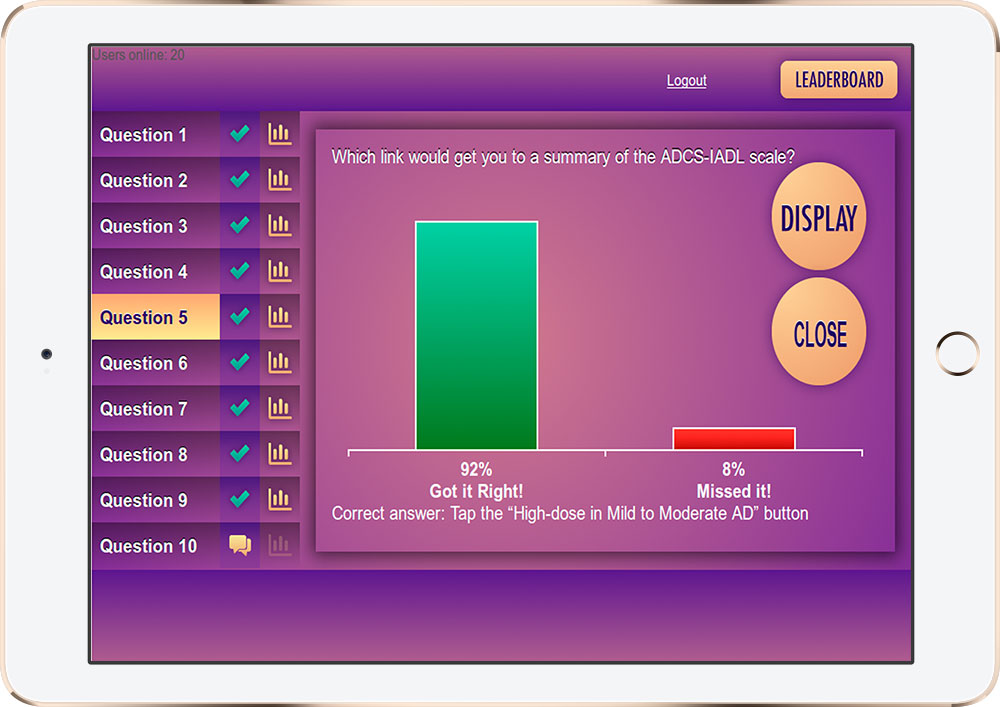
Example #6: QR Poster App
As I've already mentioned, live events a rare, so organizers try to load participants with as much useful information, as possible. In that attempt, our client often uses scientific posters to add a little extra to the core training activities.
But how do you get people to study the posters, when they’d rather have a break and drink coffee?
By engaging them.
Organizers have partnered with us to develop a QR Poster App that participants can use to interact with print materials. Reps get access to the ‘extra’ content by scanning QR code from print materials. This content comes in a form of videos, graphics, quizzes, and pdf materials to be saved for future reference.
Trainees are encouraged to participate with activity points that they can accumulate to win an award or get recognition.
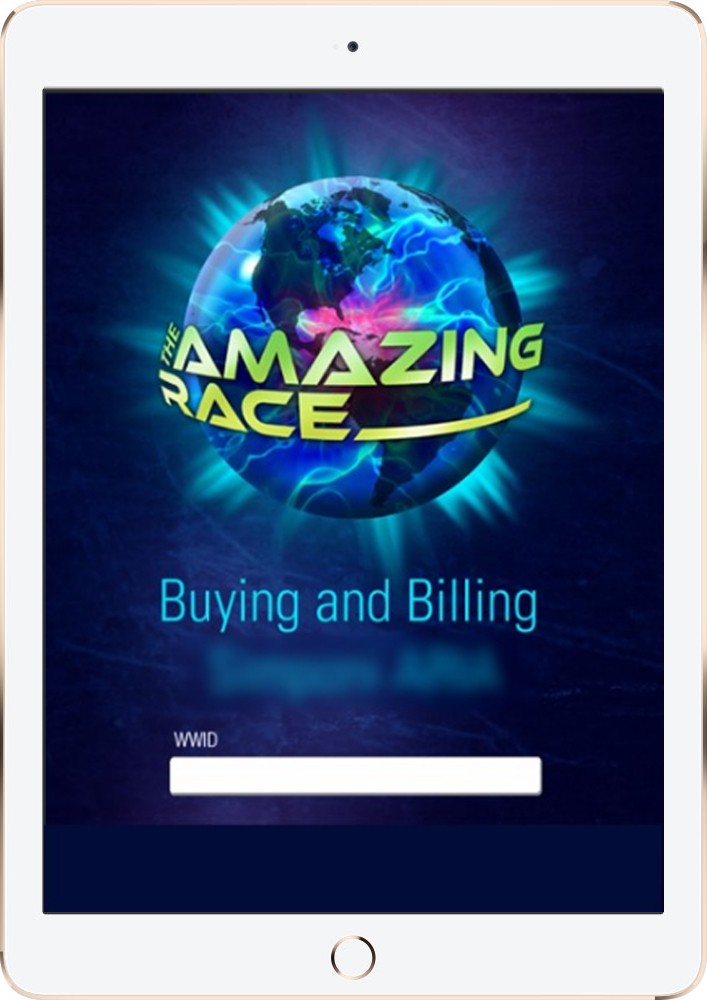
Main features:
- Scan a QR code or enter a poster number for access
- Rich media: videos, graphics, pdf materials
- Quizzes for knowledge assessment
- Scoring system.
How to Apply This to Your Business
In this article, we’ve given you 6 examples that illustrate the most important mobile learning advantages. Let’s have a quick review.
mLearning is a great amplifier of formal training. It helps learners study on their own and retain more information after the training. This is because mobile learning fits so well into the busy lives of modern employees. Trainees can study wherever they are and for whatever time they have (even if it’s only a few minutes).
Mobile learning is important and effective at boosting engagement during live training events. Trainees get genuinely excited about using technology, earning points, and competing with each other.
So we are convinced that this trend is here to stay and, perhaps, it shouldn’t be considered a trend anymore, but rather a general practice.
Are you thinking about using mobile learning in your organization? We’d be glad to help!
Are you thinking about using mobile learning in your organization? We’d be glad to help!
Contact UsRate this article!
Not rated




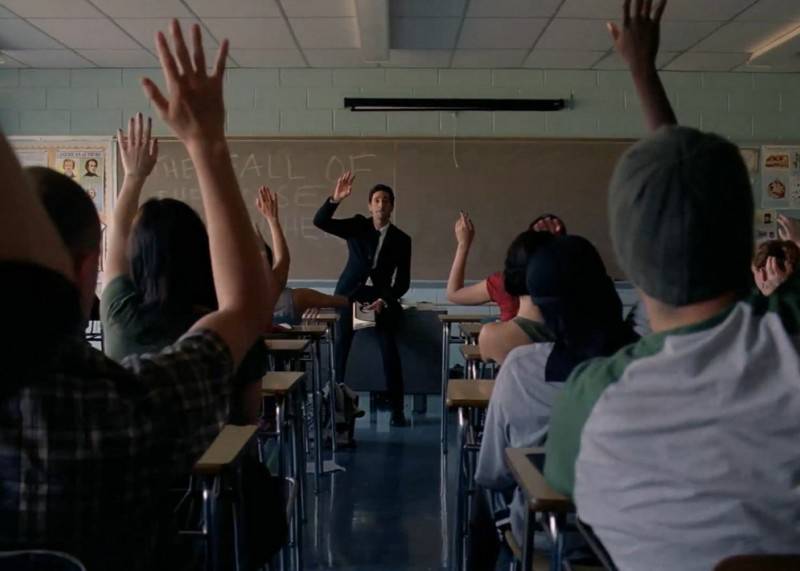

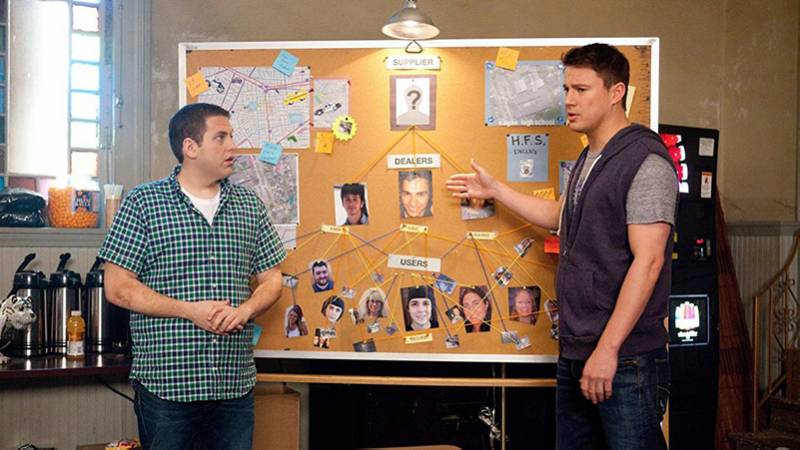
 Sign in with Google
Sign in with Google
Comments (0)